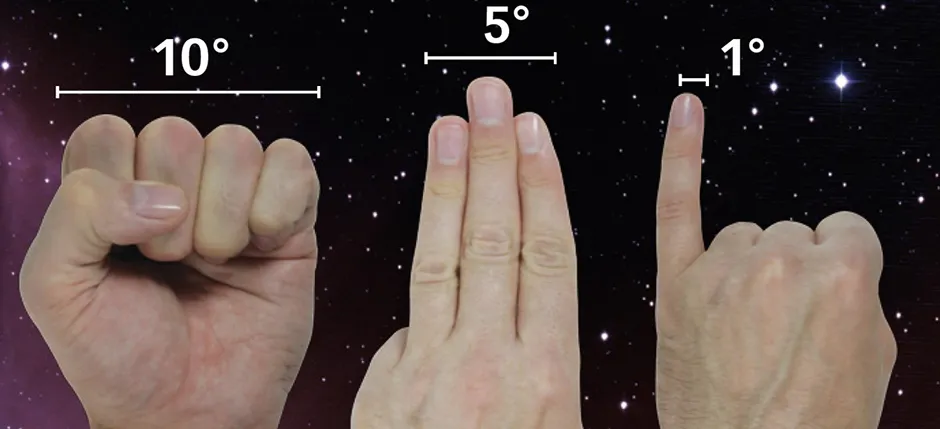Here we'll look at the easiest, most impressive stargazing events that can be seen with the naked eye or binoculars this week, and how to see them.
Get more stargazing advice every week by listening to our Star Diary podcast, subscribing to our YouTube channel and signing up to our e-newsletter.
Complete newcomer? Read our beginner's guide to astronomy
In our guide we'll refer to magnitude (mag.) and degrees (°). These are handy stargazing terms to know.
Magnitude is the word in astronomy used to describe how bright something appears, and degrees are used to measure the apparent distance between objects in the sky.
1° is about the width of a finger held out at arm's length.

Night sky this week, 28 April–4 May
It's another week during which the Moon is visible in the night sky, making a night-by-night tour of some beautiful celestial objects, including Jupiter and Mars.
And there are a few planets at their best this week, including Mars tracking across the Beehive Cluster in May 2025, making for a beautiful sight through binoculars.
On Monday 28 April, Venus is in the morning eastern sky around 05:15 BST. Saturn may be seen below and slightly to the right of Venus.
The morning of Wednesday 30 April is the best time to see Venus, around 30 mins before sunrise.

It is low on the eastern horizon and shining brightly. Take care when observing the eastern horizon this close to sunrise.
On the evening of Wednesday 30 April, the Moon and Jupiter are close to one another.
Look to the west-northwest as the Sun is going down and you'll see a crescent Moon with Jupiter close by.
Jupiter sets not long after midnight, and the Moon just after 01:00 BST in the morning.

On Friday 2 May, the crescent Moon is near Castor and Pollux, the twin stars of the constellation Gemini.
Castor and Pollux will be the two brightest stars in a straight line above the Moon. The Moon will be below Pollux.
On Sunday 4 May, the Moon is at 'first quarter', meaning it will be half-lit, making for a beautiful sight.
It's known as 'first quarter' because it's a quarter of the way through the lunar cycle, not as a reference to how illuminated the Earth-facing side appears.
Mars and the Beehive

As May kicks off, Mars and the Beehive Cluster are close together, and Mars will seem to pass just above the upper edge of the cluster over the first week of May.
The constellation Cancer, in which the Beehive Cluster sits, is well-placed in early May, so you'll have no problem finding it with binoculars.
Use our chart above to help you.
Eta Aquariid meteor shower

The Eta Aquariid meteor shower is ramping up this week, ahead of its peak on 6 May.
Meteor showers are best seen with the naked eye, making them great events for beginners.
All you need is clear, dark skies and the time to stand looking up at the night sky.
Find out more in our guide to observing the Eta Aquariid meteor shower.
Thanks to Mary McIntyre for providing the dates and timings for these stargazing events.
Share your stargazing images and adventures with us by emailing contactus@skyatnightmagazine.com

